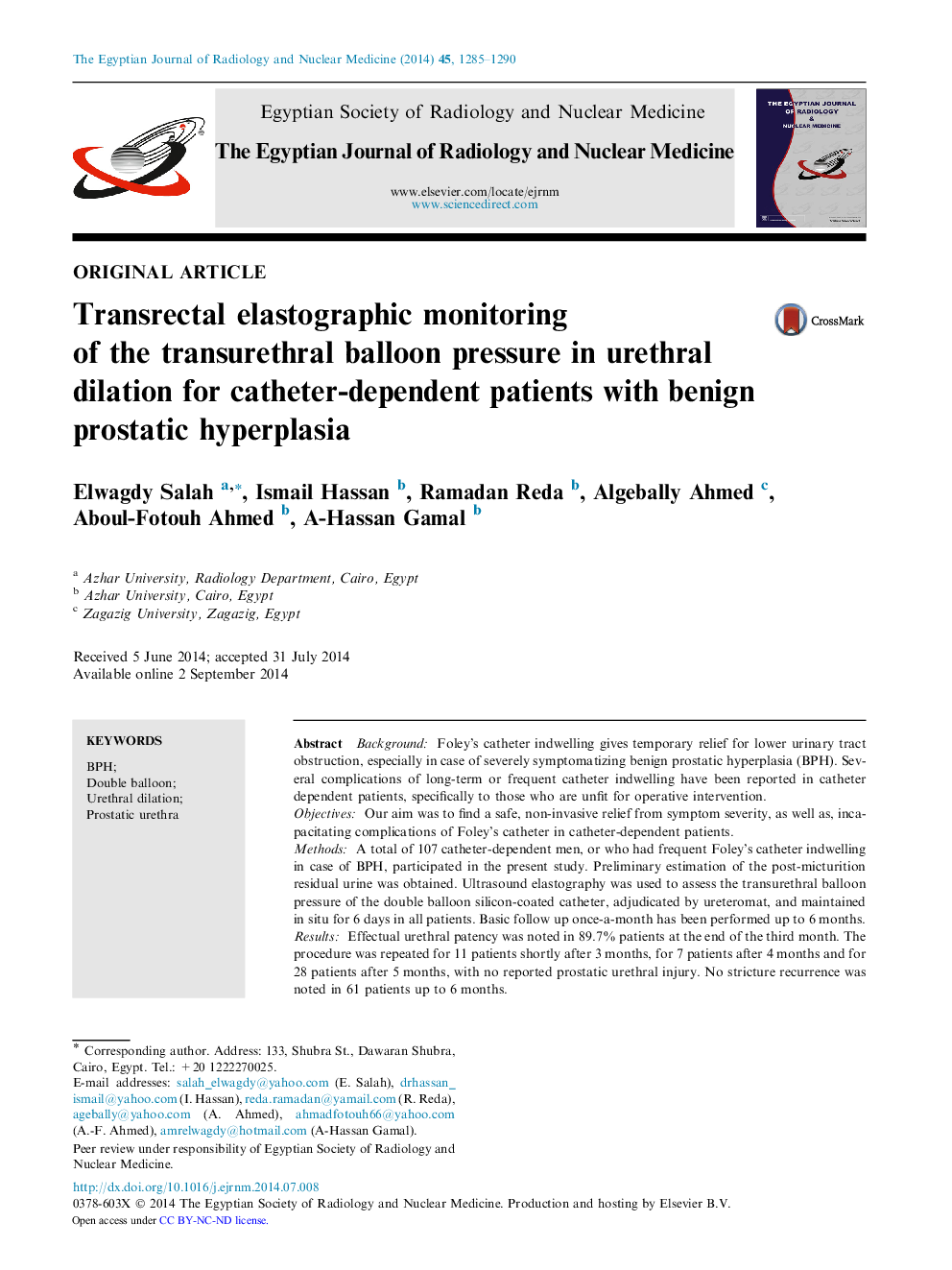| Article ID | Journal | Published Year | Pages | File Type |
|---|---|---|---|---|
| 4224322 | The Egyptian Journal of Radiology and Nuclear Medicine | 2014 | 6 Pages |
BackgroundFoley’s catheter indwelling gives temporary relief for lower urinary tract obstruction, especially in case of severely symptomatizing benign prostatic hyperplasia (BPH). Several complications of long-term or frequent catheter indwelling have been reported in catheter dependent patients, specifically to those who are unfit for operative intervention.ObjectivesOur aim was to find a safe, non-invasive relief from symptom severity, as well as, incapacitating complications of Foley’s catheter in catheter-dependent patients.MethodsA total of 107 catheter-dependent men, or who had frequent Foley’s catheter indwelling in case of BPH, participated in the present study. Preliminary estimation of the post-micturition residual urine was obtained. Ultrasound elastography was used to assess the transurethral balloon pressure of the double balloon silicon-coated catheter, adjudicated by ureteromat, and maintained in situ for 6 days in all patients. Basic follow up once-a-month has been performed up to 6 months.ResultsEffectual urethral patency was noted in 89.7% patients at the end of the third month. The procedure was repeated for 11 patients shortly after 3 months, for 7 patients after 4 months and for 28 patients after 5 months, with no reported prostatic urethral injury. No stricture recurrence was noted in 61 patients up to 6 months.ConclusionsPreliminary results indicate that prostatic urethral balloon dilation in BPH catheter-dependent patients is inexpensive, safe, and would be a potentially effective option in maintaining the prostatic urethral patency. Elastographic justification of the transurethral balloon has proved to be helpful.
